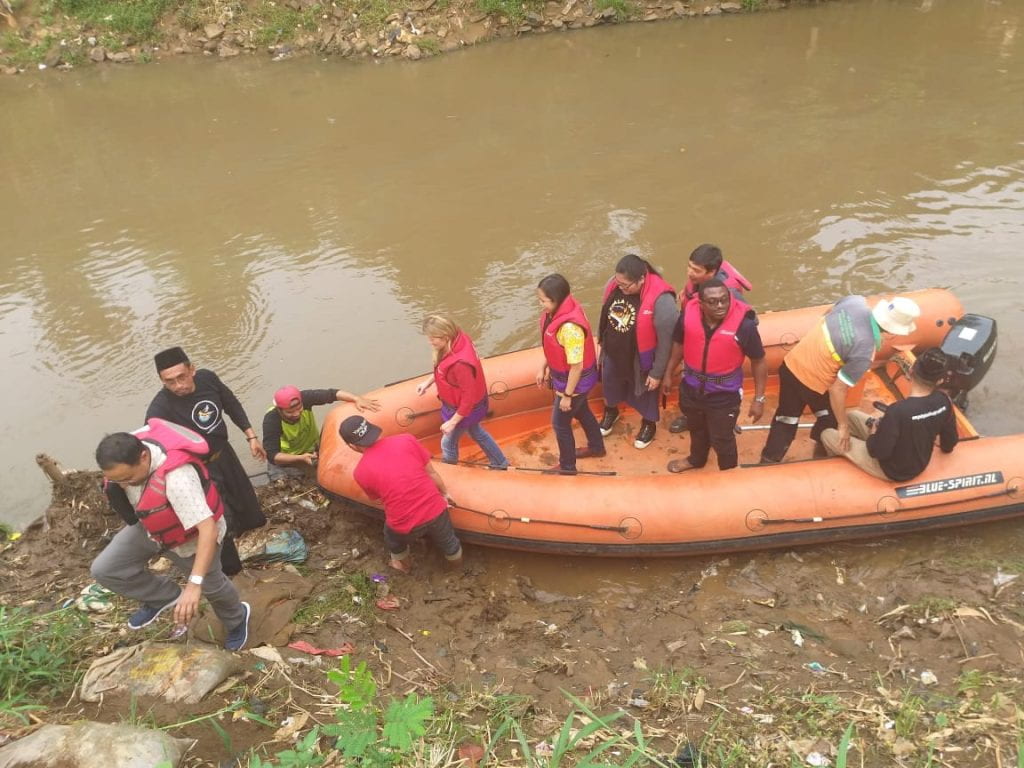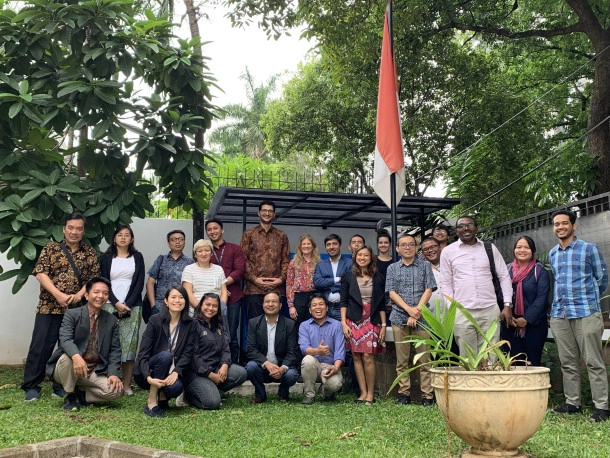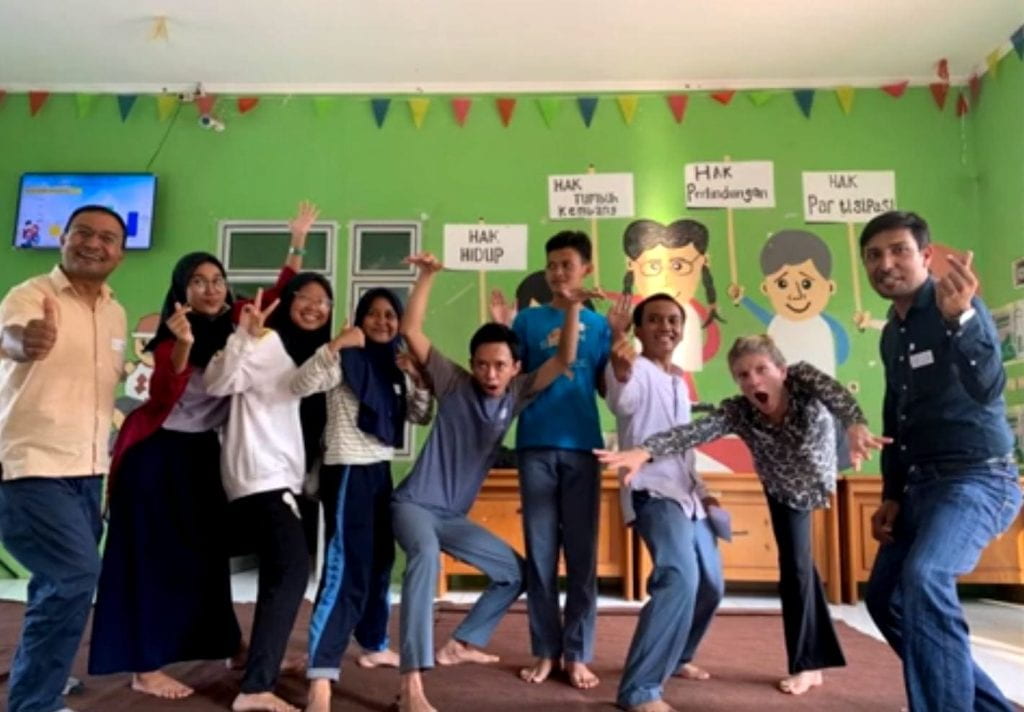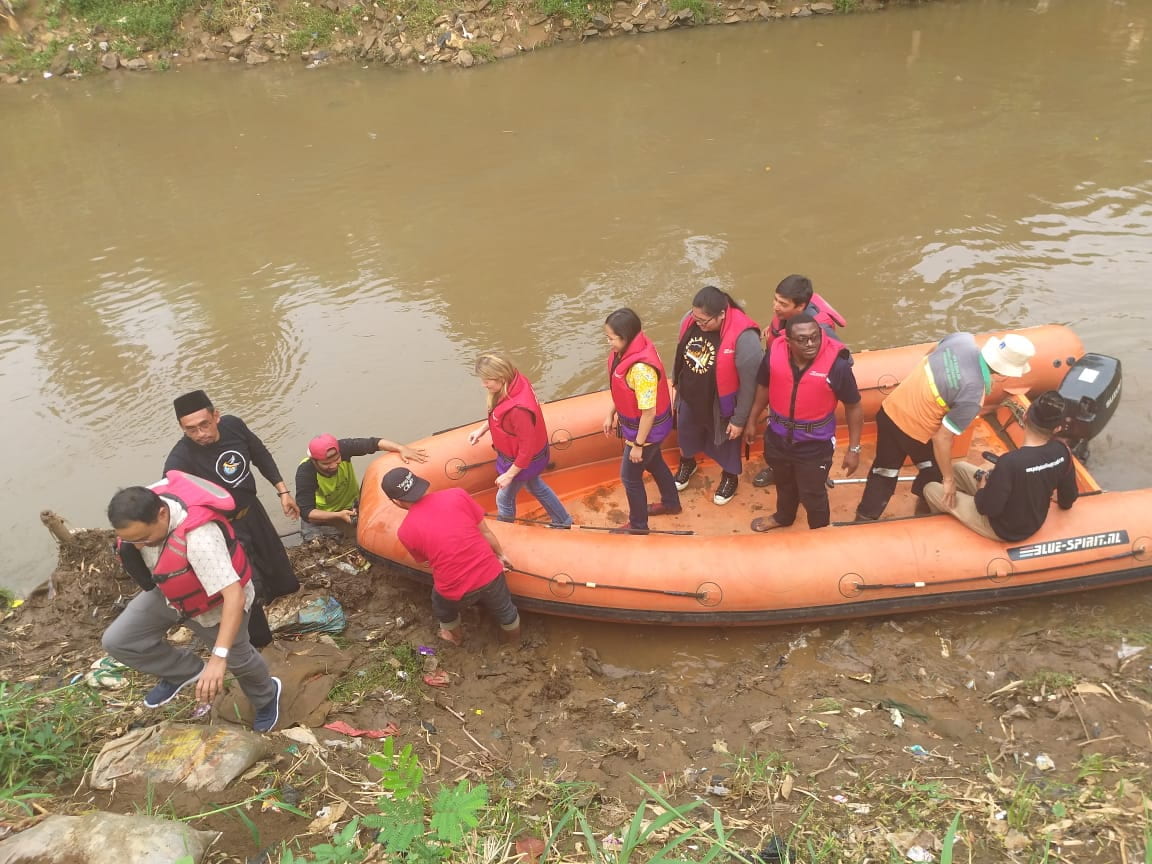In December 2019, MAP Co-Investigators undertook a four-day scoping visit to Jakarta, Indonesia, to explore how varied arts-based approaches have been and can be used to create dialogue and to explore the synergies between MAP and the aims and objectives of related peacebuilding projects. The scoping visit was organised to allow MAP Co-Is to explore the various political, social, and cultural contexts within which arts-based approaches to peacebuilding operate within Jakarta. This would support MAP in learning about the needs and deeply held values that exist in communities in Jakarta and hearing about existing work led by young people, teachers, and policymakers.
The Mobile Arts for Peace (MAP) Scoping Visit in Indonesia took place from 10 to 13 December 2019 in Jakarta. Five MAP team members came from the United Kingdom, Kyrgyzstan, Rwanda, and Nepal. Professor Ananda Breed as Principal Investigator (PI), as well as four co-Investigators (Co-Is) – Tazhykan Shabdanova, Sylvestre Nzahabwanayo, Bishnu Khatri, and Rajib Timalsina – were hosted by Atma Jaya Catholic University of Indonesia (AJCUI). The co-Investigator from Indonesia, Harla Octarra, along with local partner organisations Lembaga Perlindungan Anak (LPA) and Yayasan Anak Budaya Indonesia (YABI) organized the events. The UNESCO office in Jakarta also supported the Scoping Visit by hosting a half-day symposium that listened to presentations and discussions led by the UNESCO Youth and Sport Task Force Team and local organisations working with young people. The scoping visit was organised according to the following schedule:
Scoping Visit Activities
Day One, 10 December 2019
Consultation meeting: MAP Network Plus team, Faculty of Psychology – AJCUI, Child Protection Agency in Jakarta or LPA, and the Children of Indonesian Nation Foundation or YABI.
MAP Network Plus team held discussions with POs and Faculty of Psychology staff from the above organisations about their dedicated work with street children and children victims of abuse.[1] Before considering whether the existing MAP approach had the appropriate toolkit for developing art-based approaches which would assist and support vulnerable communities in this area, this discussion aimed to explore existing work and services which support street children and youth. More specifically, MAP sought to complement and address current gaps in toolkits that care workers/tutors use when engaging with street connected youth.
[1] Children refers to anyone below the age of 18.
Betawi culture exposure by the river of Ciliwung, East Jakarta

In the afternoon, the MAP team went to the Condet area in the eastern part of Jakarta, by the Ciliwung river, where they met with a community which works to provide space for local people, especially young people seeking to preserve nature and explore creative arts while at the same time preserving Betawi cultural forms. The community is called Padepokan Ciliwung Condet. The afternoon visit gave the MAP team a clear insight into how local community-based organization works to promote traditional arts while protecting the environment. The Head of the Padepokan, Bang Lantur, shared a key idea about encouraging more people to see and learn about the socio-historical context of Ciliwung river and its importance to preserving the local culture. Bang Lantur says that ‘habit makes custom and custom makes culture’. He believes that keeping the natural environment clean is part of preserving heritage. The MAP team learnt that revitalizing traditional art-forms (i.e. Betawi culture) can be done alongside preserving nature and heritage. This effort, which involves producing and selling traditional snacks and handmade souvenirs among others, can empower the economy of Betawi people.
Day Two, 11 December 2019
Cultural Workshop: The second day of the scoping visit was a showcase on the use of cultural forms as peace-building approaches and how the forms were being used for dialogic purposes among children and youth in Indonesia. This was a valuable opportunity for the MAP team to develop relationships with local level actors and CSOs.
The day began with two short presentations on experiences of using arts and creative educational activities to promote peace in out-of-school setting (Sanggar Anak Akar) and in-school setting (Wahid Foundation). The Wahid Foundation talked about concepts and indicators of their peace-schools program. The program engages students and teachers in five areas: integration of schools’ programs, management of school’s environment, management of learning activities, creation of a working group, and early detection system of intolerance and radicalism. Sanggar Anak Akar, a member of Koalisi Seni Indonesia (Indonesian Art Coalition), introduced their educational approach as Humanist Education through Arts. The approach positions children/young people, mostly those who have lived or spent time on the street, in various roles as the teller, photographer, and observers of their own realities or shared realities – all of which they would then communicate through arts forms, such as music, theatre and photography.
The MAP team developed a series of observations from this workshop, including:
- Different local art forms, such astheatre games, as facilitated by Kalanari Theatre Movement; traditional marching dance (Soreng Dance) by Tlatah Bocah; and storytelling as facilitated by YABI, are valuable in two ways: 1) these forms are used for telling stories from the margin; 2) the art forms are able to encourage audiences think and act creatively, even with strangers.
- Because cultural variations in Indonesia are significant, the art forms would very much depend on the local art/traditions where MAP is going to be introduced. Engaging with the schools and local artists/historians is key in the assessment stage. In general, dancing and music as part of ceremonial acts are common throughout the country. At the same time, there are certain groups who consider traditions/cultural practices are against religious teachings. Members of a local community in East Jakarta highlighted to the MAP team that this is one of the key challenges for young people to engage in arts-based practices.
- For the out-of-school children, street art forms such as music (self-made) are prominent, and also based on experience. They are open to exploring techniques in which they not only could share personal stories, but also learn leadership and teamwork skills. Examples of what had been done include theatre performance by child victims of sexual exploitation depicting their stories in front of local government officials.
Day Three, 12 December 2019
Symposium at UNESCO

Day Three featured a UNESCO symposium which included presentations from a young person who was a member of UNESCO Youth and Sport Task Force Team. This presenter shared their experiences of taking part in the initiative to promote confidence and anti-bullying. Kampus Diakoneia Modern (KDM), an organization working to deliver shelter and alternative education to street connected young people in Jakarta presented their study from 2015 on the same topic. The symposium closed with an impromptu sharing from Ganara Art, a member of Koalisi Seni Indonesia (Indonesian Art Coalition), who initiated Mari Berbagi Seni, an art sharing movement that has taught creative art education programs to more than 11,000 children and teachers throughout Jakarta and other cities in Indonesia. The symposium spotlighted young people’s role in peacebuilding activities while also informing about challenges of radicalization among Indonesian youth.
Day Four, 13 December 2019
Visit to RPTRA (child-friendly integrated public space) in East Jakarta (Cipinang Besar Utara); Informal meeting with street connected youth.

On the final day of the Scoping Visit, the MAP team visited 1 RPTRA (child-friendly integrated public space) in East Jakarta. At the RPTRA, the team were welcomed by the chief of the urban village and local community members and leaders, caretakers of the space and local government officials. The RPTRA team presented the facility and highlighted that the space is open 7 days a week, free of charge, and local community members have been using the space for various gatherings, including for Forum Anak (Children’s Forum) to hold their regular meetings. A Children’s Forum is a forum of young people, commonly aged between 12 and 17-years-old, to realize meaningful participation through the promotion of children’s rights and participation in government sponsored community/national development planning. The MAP team met and consulted with local community members and leaders, tutors/caretaker of the space, and local government officials about issues that young people faced and their engagement with arts. The MAP team found that, through children’s forum and street connected youth, MAP ideas can help direct the use of street art forms (e.g. self-made music) for channeling their stories/advocating issues.
The Scoping Visit enabled exchanges of views and sharing of experience among stakeholders working to address global challenges and promote peace among children and youth within informal and formal educational contexts. The activities shed light on cultural diversities, and potentials of different arts forms to be used as dialogue for peacebuilding. In all of the initiatives exemplified during the visit, there is a cautionary note on exclusions of marginalized young people. Lastly, the visit drew insights from stakeholders’ shared views and experiences in order to assess pathways to impact implementing MAP in Indonesia.
Author: Dr Harla Sara Octarra
